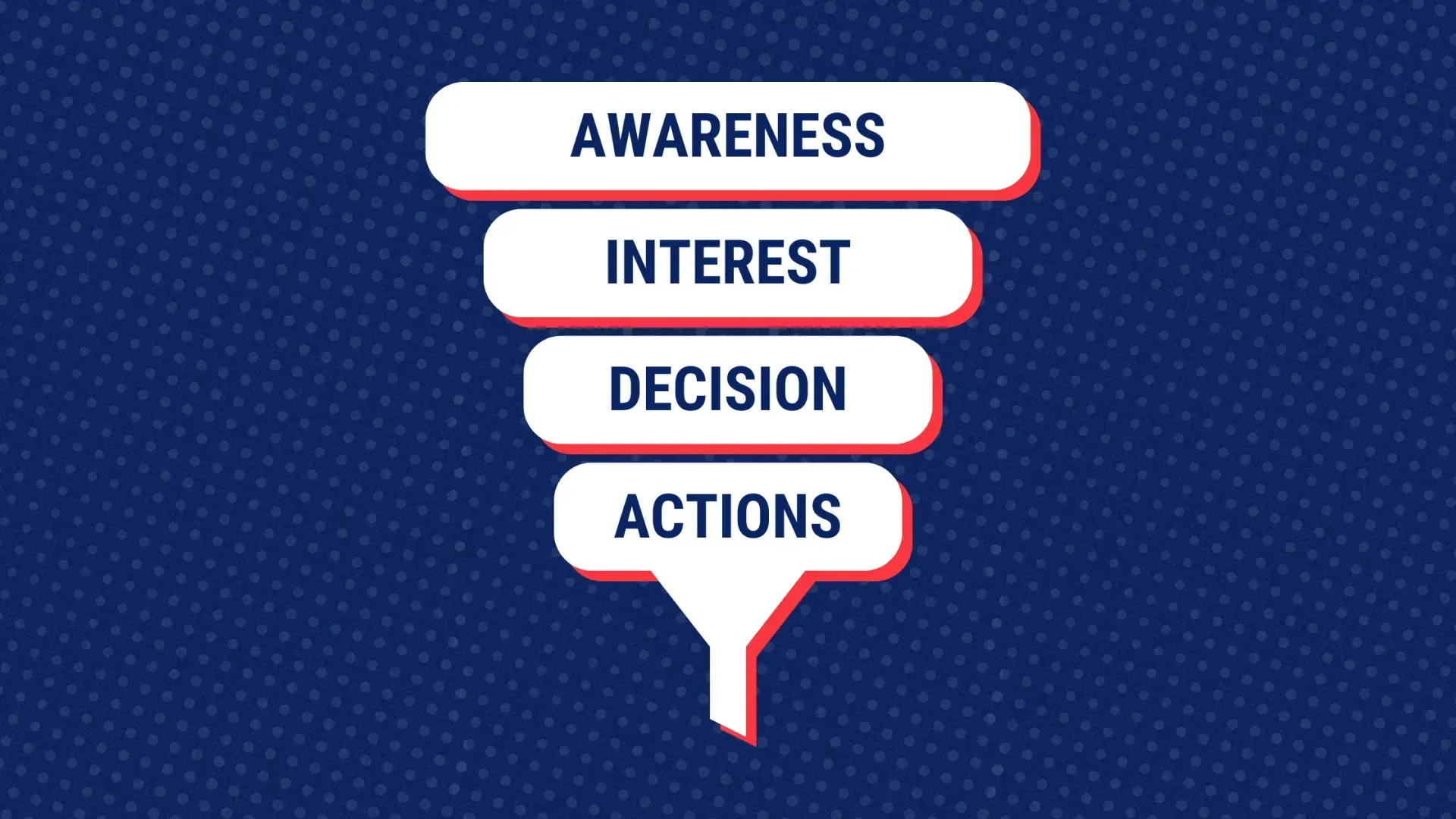Marketing for Architects: 2025 Firm Strategy Guide
Marketing for Architects - Ten Proven Strategies
If you have been struggling to attract, find, and win high-value projects, then you are reading the right article.
This is Archmark's ultimate guide to marketing for architects. Our goal in this article is to share the best strategies and tactics that will help your architecture firm improve online visibility and increase project inquiries.
Did you know there are more than 14,000 different marketing services and tools available?
If you are not familiar with the world of online marketing it can easily become challenging, confusing, and overwhelming. We see this a lot with the firms we speak with. Someone on the team sees a tool mentioned by a colleague, and they waste a lot of time, money, and energy trying to get the results.
But here is something to consider, everyone's situation is different. A tool that works for one firm may be a complete waste of time for another. You also need to remember that many architects don't have marketing experience. These factors combined may explain why many firms, especially small architecture firms, have fallen behind other professions in terms of online marketing.
So you may be wondering, why is online marketing so important for architects?
What many firms miss is that online marketing channels can provide more cost-effective and less time-consuming solutions for client attraction and engagement, and they can be ideal for communicating the expertise and experience that differentiates them and their firms from competitors.
In this ultimate guide to marketing for architects, we break down
10 of the best strategies and tactics for marketing architecture firms online. After reading this authoritative article, you’ll have a much better understanding of the options available to help your firm
attract, engage, and win ideal clients.
Relying on Referrals: The Pitfalls of Hope Marketing
In the early part of the 20th Century, architecture was considered a “gentleman's profession.” In the United States, architects faced professional sanctions for advertising or promoting their firms. During these times, when it came to business development, architects focused on developing and protecting their professional reputations as a primary means of attracting and retaining clientele.
In 1972, after the US Department of Justice intervened, these professional restrictions were abolished, but, to this day, for many firms, old habits have been difficult to change. In fact many of the firms that contact us, especially those that were established 20 or more years ago, continue to rely heavily on referral and repeat clients. They likely have a website, social media profiles, and an email list, but they are not using these tools effectively or in coordinated and strategic ways.
At Archmark, we use the term “Hope Marketing” to describe this approach, as many architecture firms are simply hoping and waiting for the phone to ring with a call from an ideal client with an amazing project.
However,
relying on passive approaches to business development more often means taking whatever work you can get.
In many of these situations, the phone isn't ringing off the hook, and when it does ring, the result is more like a roller coaster ride. Those referral clients are more often wanting better results at cheaper rates than the clients who referred them.
This leads the firm down of path of trying to deliver greater value at lower fees resulting in reduced profits and returns while all other expenses are on the rise.
However, the one constant in life is that things change.
Architecture, like many professions has seen a lot of changes, especially since the advent of the internet. Competition is more fierce, budgets are more tight, talent is more scarce, costs are higher.
And all the while, the internet has become increasingly more important for business success.
Having a strong online presence is vital to marketing your firm today. Your future prospects now refer to Google searches and online reviews when researching architecture firms for their projects.
It’s no longer an option to have an online marketing strategy, it's essential.
- If you are not creating awareness and visibility for your firm online, you will become invisible.
- If you are not engaging clients and nurturing relationships with them using automation, they will forget you.
- If you are not sharing your expertise and experience, they won't see your firm as a valuable and trusted resource.
But if you are starting from scratch, like many Archmark clients, going from knowing nothing about marketing to mastering the basics doesn't happen overnight.
This article is a short
introduction to the marketing strategies that have helped our clients.
Keep reading to better understand the 10 options we recommend for boosting your firm’s online presence.
Struggling to Attract Clients to Your Firm?
You can keep trying to figure it out on your own, or maybe it’s time to speak to an expert? Click below to apply for a Free 20-minute Clarity Call today to learn how Archmark can help your firm thrive.
Marketing Strategies for Architects - A Vital Element To Your Firm’s Long-Term Success
Online (aka digital) marketing refers to the digital or internet-based channels that you can use to improve your architecture firm's brand recognition, online reputation, project inquiries, and ultimately, its revenue. Below are some of the specific ways online marketing strategies can help your firm.
Increased Visibility and Brand Reach
Online marketing helps your architecture firm stand out in a crowded marketplace by enhancing its visibility regionally, nationally, or even globally. Visibility is crucial for attracting new clients and landing high-value or high-profit projects. For example, implementing Search Engine Optimization (SEO) strategies can help your firm’s website rank higher in search engines, like Google, making it easier for your ideal clients to find you, leading to increased website traffic and more project inquiries.
Strengthening Reputation and Client Relationships
Producing valuable content such as blog posts, podcasts, videos, and white papers can help firms position themselves as industry leaders. This not only attracts interested prospects and strengthens your reputation with them, it also builds your existing client relationships by keeping them engaged and informed about your experience and expertise. Social Media platforms like Facebook, Instagram, and LinkedIn allow firms to engage and interact with clients and prospects to build community around your brand and foster loyalty.
Lead Generation and Client Conversion
Offering free resources such as e-books, checklists, or templates in exchange for your prospect's contact information can help build your list of potential future clients. These tools are known as lead magnets and serve to provide value upfront while capturing leads for future follow-up. Sending email drip campaigns and newsletters allows you to keep your firm top-of-mind with prospects and past clients, helping you nurture their interest in working with your firm. Providing these contacts with regular updates about your firm’s activities and insights can lead to increased project inquiries over time
A Cost-Effective Return On Investment
Did you know that online marketing is often more cost-effective than traditional marketing methods like magazine or radio advertisements? This is often because digital marketing methods can help you build trust with prospects before you ever talk to or meet them. While you are focusing on design, your website can engage and qualify prospects, and help them schedule an initial consultation with your firm. Online marketing also allows you to track the effectiveness of your campaigns to better understand what is working and what is not to easily refine your strategies over time.
There are many different ways that online marketing strategies can help your firm, and while you will find plenty of information for “how to market to architectural firms” and “digital marketing for architectural products,” you'll find fewer helpful resources for marketing architecture firms.
Table of Contents
This guide covers ten different tactics that can be part of a solid online marketing strategy for architecture firms. A solid marketing strategy is the crucial to boosting your firm’s online presence to attract and convert your future clients.
To jump to a specific tactic, click on the images below to jump to that section of the article.

01. Search Engine Optimization (SEO) for Architects
Search engine optimization, or SEO, refers to the process of optimizing your website so it ranks well in search engines when potential clients search for services like yours.
When your firm's website appears on the first page of Google search results like “architectural firms near me,” you'll likely see more traffic to your website, and more opportunities to engage prospects.
Just a word of caution on expectations: Many people believe that a brand new, SEO-optimized website is all you need to get search rankings, but this simply is not true. There is no easy way to get your website #1 in Google. You have to be patient. It can take time for Google and other search engines to recognize your website, let alone for it to rank well for specific search terms.
SEO is a strategic process that can deliver high-value returns, and long-term visibility, but it requires sustained effort over time.
What Do Architects Need to Know About SEO?
Search engines like Google have become the number one go-to place for finding information about anything you can think of. It shouldn’t be a surprise that potential clients research architects via Google as well.
Search engine optimization encompasses various strategies and tactics that help your website rank higher on search engine results pages (SERP). SEO is typically focused on publishing and optimizing website content (like blog articles) and business directory listings (like Google Business Profile) to increase your firm's visibility online and, ultimately, attract your ideal future clients to your website.
What’s SEO good for?
Increased online visibility in search engines, and more traffic to your website from online searches.
What’s SEO not good for?
Quick or short-term results.
What Do Architecture Firms Need to Know About SEO?
SEO ranking factors are constantly evolving as search engines adjust their algorithms, but there are three main questions that these search engines algorithms use to evaluate the quality, and subsequently the ranking, of your website:
- Are you delivering content that is interesting and relevant to your website visitors?
- Are your website's page titles, headers, and URLs optimized for relevant keywords/search queries?
- Are other authoritative websites validating your content by linking to it from their websites?
With the above in mind, when developing your SEO strategy, you'll want to address these questions effectively. To do that, many SEO specialists recommend paying close attention to the following:
Keyword Research
You can use several tools to better understand how to optimize your online presence so you can rank for specific search terms or keywords. Use tools like Google Search Console to analyze the terms your website is currently ranking for. Use AI tools like ChatGPT to research the phrases your ideal clients may be using in search engines to find services like yours. You can also use SEO tools like SE Ranking or SEMRUSH to analyze your competitor's search rankings, however, these tools may require specialized training to use well.
On-Page SEO Optimization
Once you have a list of keywords, you will want to ensure that your website content is optimized for these terms. This means analyzing the individual pages on your website and optimizing each page for specific search terms. Behind the scenes, each page contains "tags," including page descriptions, page titles, headers, and alt tags (used to describe images), which can be ‘read’ by search engine crawlers. Crawlers are programs used by search engines to scan your webpages. If localized searches are important to your firm, include keywords and content specific to your area.
Building Backlinks
To obtain high-quality backlinks, partner up with established names in the architecture industry to get exposure to their followers. Offer valuable content packed with your expertise for their blog. Another more old-school approach is to send press releases about your newly completed projects to relevant publications.
These are some highlights of a well-executed SEO strategy. Keep in mind that your website content should be relevant to the audience you want to attract. Optimizing pages with content that answers prospective clients’ questions will likely infuse that content with relevant keywords that help your website get found in search results.
Increasing your visibility through SEO techniques and delivering valuable content results in more traffic and increased leads. We always recommend focusing on getting your website right first.

02. Search Engine Marketing & Pay-Per-Click Ads
Search Engine Marketing (SEM) is a digital marketing strategy that primarily uses Pay-Per-Click (PPC) advertising to increase the visibility of websites on search engine results pages (SERPs).
How Does Pay-Per-Click (PPC) Advertising Work?
PPC campaigns are typically managed through and advertising platform, such as Google Ads.
- Advertisers use keyword research to identify the search terms relevant to their potential clients.
- They then bid for the opportunity to show their ads when users those relevant search queries are used in search engines.
- Each time a user performs a search, the auction platform determines which ads appear, based on bid amount, ad quality, etc.
- Ads appear at the top or bottom of the SERPs, increasing the chances of being seen by users.
How Can Pay-Per-Click (PPC) Advertising Benefit Architects?
Just like SEO, PPC Ads allows architects to target specific keywords, ensuring that ads reach those users that are actively searching for their services. PPC advertising platforms can allow you to track metrics such as clicks, impressions, and conversions to evaluate the effectiveness of their campaigns. Unlike SEO, which can take time to show results, SEM provides immediate visibility in search results.
What’s PPC good for?
Getting quick visibility on search results pages.
What’s PPC not good for?
Long-term website ranking improvement on search engines.
Is Pay-Per-Click (PPC) Advertising Right for Your Architect Firm?
PPC advertising can be an effective way to quickly increase visibility in search results and, potentially, to increase your firm’s website traffic. PPC campaigns also provide a host of tools and metrics to allow you to track, A/B test, and retarget users that didn’t follow through with your call to action the first time they visited your site.
And while you have to keep paying for PPC campaigns to remain active, you only pay when a visitor clicks the ad, so if you are selective about the keywords you choose, and the messaging in your ads, you can manage your costs.
At face value, it may seem like PPC Ads could be great for an instant boost in website traffic and potential clients, however our advice is to approach PPC cautiously for the following reasons:
- High Competition: PPC advertising for competitive keywords can present specific challenges. Small architecture firms might struggle to compete with larger firms with bigger advertising budgets. You may also find that you are competing with other companies and firms from other industries for popular keywords, which can raise costs and make campaigns expensive.
- Ongoing Optimization: PPC campaigns require constant monitoring and optimization to ensure effectiveness. This includes adjusting bids, testing ad copy, and refining targeting strategies, which can be time-consuming and require expertise.
- Risk of Overspending: Without careful management, there is a risk of overspending on ineffective ads. Architects need to ensure that their PPC campaigns are well-targeted and that they are getting a good return on investment.
- Complexity and Learning Curve: PPC advertising can be complex, requiring a good understanding of how to effectively manage campaigns. This might necessitate hiring a specialist or investing time in learning the nuances of PPC management.
- Communication Challenges: Creating compelling ad copy for PPC Ads to effectively communicate your firm’s unique value can be very challenging in the limited space of a PPC Ad, especially when you are trying to attract high-value clients.
- Click Fraud: Like other industries, architects face the risk of click fraud, where competitors or malicious actors click on ads without any intention of hiring services, thereby wasting the advertising budget.
- Targeting High-Value Clients: While PPC Ads can quickly increase your firm's visibility in search results pages, many question whether these ads are effective, beyond name recognition, for attracting leads for high-value clients and projects.
These challenges mean that while PPC can be an effective marketing strategy for architects, it requires careful planning and execution to avoid potential pitfalls.
And based on our discussions with architecture firms that have taken this approach, paid ad campaigns often attract a higher percentage of clients looking for low-value and one-off services. We’ve heard stories about people coming through from PPC Ads looking for blueprints or asking for architects to stamp a set of plans purchased online.
Another important thing to remember with paid ads: If you’re paying to drive traffic to your website, your website needs to look its very best. That means it needs to be up-to-date, it should showcase your best work, and it must function correctly. There’s no point in paying for traffic if your contact form doesn’t work or your highlighted projects are less-than-inspiring.
03. Content Marketing
Successful content marketing for architects builds trust in your brand by providing in-depth and highly relevant content on your website and blog. It can include blogging, articles, e-books, videos, and webinars.
What’s content marketing good for? Raising brand awareness and authority, communicating your value, and improving search rankings.
What’s content marketing not good for? Instant results.
Content marketing encompasses all your marketing efforts and techniques to create educational and shareable content for your target market.
Many architecture firms focus their marketing efforts on the last stage in the buyer journey, the ‘hire me’ stage. This assumes that your website visitor is an educated buyer - which often isn’t the case for most people new to hiring an architect.
This often leads to frustration on both sides when content doesn’t make it clear what the architect actually does. Unless prospects have worked with architects before, they might have ideas about your firm’s services in their minds that don’t match reality - and you will probably end up feeling undervalued and underappreciated as a result.
Thankfully, this issue can be solved by creating content that answers questions, primes readers for working with you, and ultimately attracts your ideal clients.
Content marketing is your chance to establish your firm as the authority in your niche: 96% of marketing decision-makers say content marketing has been effective for their brand.
Content marketing has proven to be incredibly effective for many of our clients, helping them attract more clients and better-fitting projects.
Is content marketing for architecture firms easy?
With the right marketing strategy and process in place, you can effectively create content that engages and converts your audience. Great content marketing doesn’t need to take hours of your time.
At Archmark, we use this successful method of creating content that gets results for our clients, and can help you make content marketing easier too:
- Conduct a video interview with the client, covering the important aspects of the topic they want to write about
- Transcribe that video
- Create a blog article from the transcription and post it to the client’s website
- Use highlights of the article copy and even clips from the audio or video for social media posts
- Publish social media posts several times over the next 12 months and monitor engagement and clicks through to the article
This way, you can get multiple pieces of content from the one topic, and minimize the time it takes to repurpose for different mediums.
05. Email marketing
What is email marketing?

Email marketing involves collecting email addresses from prospects and regularly sending them informational, promotional, and engaging emails to nurture your relationship with them.
What’s email marketing good for? Nurturing leads, building relationships, and re-engaging with former clients.
What’s email marketing not good for? Ad-hoc attempts at outreach.
The sheer volume of emails sent and received worldwide every day (293.6 billion, yes really) might leave many architecture firms with the impression that this technique might not be feasible for them.
The reality is that email marketing is a great opportunity to achieve a high return on investment. For every $1 you spend on email marketing, you can expect an average return of $42.
This marketing technique nurtures existing client relationships, keeps you front of mind, and helps you establish your architecture firm as the expert to your target market.
How do you build an email list?
To obtain prospect email addresses, you can create a free offer or lead magnet on your website. This can be a branded PDF guide with helpful content like a project checklist, must-ask questions for hiring an architect, or a step-by-step guide on how your process works.
Remember to answer your prospective clients’ questions and they will happily download your advice in exchange for their email address. But, they don’t want to download a sales pitch, they want actual, valuable insight.
How can you stand out in people’s inboxes?
Once you have their contact details, you can stay on people’s minds via regular newsletters and other email offers.
To get started, invest some time in planning, learning the tools, and get your chosen email software set up.
Many email marketing processes can be automated with the help of automation software like MailChimp or a Client Relationship Management (CRM) system like ActiveCampaign.
Learn more about our Email marketing strategies and Keep reading for more on using email as part of automated marketing campaigns...
06. Lead funnels
What is a Lead funnel?

Lead funnels are a systematic approach to generating leads. They ‘funnel’ your ideal audience through distinct marketing and awareness stages until they make a decision on hiring you.
What are lead funnels good for? Attracting (and converting) a specific, well-defined audience.
What are lead funnels not good for? Targeting broad audiences.
A lead funnel is a purposely-built, carefully-crafted buyer’s journey from becoming aware of your brand to hiring you. There are usually four stages to a lead funnel:
- Awareness: This is where people search for information to identify their problem and a solution for it. They become aware you’re an option to provide that solution for them.
- Interest: At this stage, potential clients are looking for more specific, in-depth information on how to solve their problems. Site visitors can be converted into leads by providing the advice and insider insights they’re looking for.
- Decision: Once leads have made it this far, they’re ready to make their decision. Your informational content and clear brand messaging should convince them that your architecture firm is the right choice over your competitors.
- Action: At the bottom of the lead funnel, your prospects will probably have questions about pricing and implementation to see if they’re comfortable with what you’re offering. If you’re the right candidate, they take action and hire you.
To build an effective lead generation funnel you need to provide quality content throughout the client lifecycle to attract your ideal clients (and filter out any unsuitable ones).
We often see architecture firm websites without a clear initial offer to hook prospects into the funnel, or they’re trying to move potential clients to quickly to the ‘hire me’ stage.
It may seem like a funny comparison, but a lead funnel can closely model courtship. You wouldn’t expect someone to marry you at first sight.
Likewise, your website visitors may not be ready to hire you on their first visit. They may simply be looking for answers to basic or initial questions.
If your website can provide a high-value resource to answer those questions, and allow you to capture their email, you can keep them interested with a stream of emails.
By using email to start — and keep — the conversation going, you can help them feel more excited about working with you, and effectively position you and your firm as the go-to experts they need for their project.
With any lead funnel, it’s crucial to make it easy for users to sign up for your services. This means providing clear calls to action that lead to an offer, like a paid consultation, to establish initial contact.
07. Video marketing
What is video marketing?

Video marketing builds brand awareness and promotes your services via engaging video content.
What is video marketing good for? Increasing reach and engagement on social media.
What is video marketing not good for? Instant conversions.
Videos have a particularly wide reach and engagement on social media with 1200% more shares than text and image content combined. That makes it the ideal medium to show off your architecture firm’s portfolio.
This is not the time to be camera shy.
A pro tip here is to go live on Facebook, Linkedin, and/or Youtube while at a project building site to virtually talk to as many prospects as possible.
To drive engagement and interest from potential clients, you can also answer the common questions you get from new clients.
Many social platform algorithms favor live videos, and on Facebook they receive six times more engagement than regular videos. This can greatly increase your reach and make it possible to attract your ideal future clients.
If you’re nervous about going live on video, take time to do a few practice runs recording to your smartphone and review your technique before making your public debut.
The success of your video marketing campaigns might not be visible in conversions immediately but videos are a great tool for increasing visibility and brand awareness online.
08. Marketing automation
What is marketing automation?

Marketing automation is used to reduce or replace repetitive tasks and manual marketing processes using artificial intelligence (AI) and purpose-built software.
It includes tools like appointment schedulers, chat-bots, client relationship managers (CRMs), email marketing, social media post schedulers, and pay-per-click ad campaigns.
What is marketing automation good for? Streamlining processes and reducing repetitive tasks.
What is marketing automation not good for? Quick implementation.
Marketing automation software can help cut through tedious admin processes and ensure you follow up with the right people who are interested in your firm’s services.
A good place to start with automating your email marketing processes is to set up your CRM system to send personalized, targeted messages to prospects.
Many CRMs have the ability to send a series of emails triggered by specific actions or based on predetermined timing (these are known as “drip campaigns”).
For example, once prospects sign up for your newsletter or download your lead magnet, you can send a series of follow-up emails, with additional high-value content, over the coming days or weeks to keep your architecture firm fresh in their mind.
09. Virtual events and webinars
What are virtual events?

Virtual events and webinars are live streams hosted on video conferencing platforms like Zoom, GoToWebinar, Google Meet, or Livestorm.
What are virtual events good for? Building a loyal following over time and growing your authority with your target audience.
What are virtual events not good for? Quick or low-effort results.
Virtual events first gained great popularity in early 2020 as people looked to stay connected while also stay safe as the Covid-19 pandemic spread. It clearly shows in the numbers, as 80.2% of event organizers were able to reach a wider audience with virtual events in 2020.
Virtual events have only continued to grow since then, and there's no sign of that slowing down, even as in-person events come back. The ease of participating in an event from your laptop and desk, without the time and cost of travel, helps to make online events an option organizations will continue to offer.
In our own experience organizing and hosting the 2020 Architects Success Forum, we found virtual events are a fantastic way to grow your authority as an expert, partner with other like-minded professionals, and expand your audience.
If you’re considering hosting a live event or webinar to show off your industry knowledge, keep in mind that next to being informational, it should also be entertaining.
Depending on the scope, potential interest, and the ‘star quality’ of your guests, you might even be able to sell tickets for your event.
This is a great way to get email addresses from prospects too. After all, taking time out of their busy schedules to attend your event shows enormous interest. If they like what they see, there’s a higher chance of hiring your architecture firm for their project.
Hosting events takes considerable planning, effort and time. LearnRight is a learning management system that makes it easy to create your event material, market it to your network, and make learning interactive with quizzes and assignments. LearnRight also integrates with Zoom, Salesforce, and other tools to help with your event..
10. Business listings
What are business listings?
A business listing is your architecture firm’s public profile on online directories like Google My Business, Bing, Yahoo, and Yelp. This usually includes your name, address, and phone number — in short, NAP.
What are business listings good for? Creating brand consistency across many channels, improving local SEO, managing online reviews.
What are business listings not good for? Direct engagement with prospects, low-effort results (unless you use a listings management service).
Business listings play a huge role in local search engine optimization (SEO), so it is vital to ensure that contact details are correct and consistent across all online directories.
If you’re thinking that this might be a lot of admin work, we have a solution for you. At Archmark, we offer a service that allows you to claim and maintain the TOP 70 listings using one simple dashboard. You can also track and manage online reviews from some listings.
We normally don’t recommend paid or premium business listing options like Houzz, Home Advisor, Thumbtack, or Angie’s List. (Though some of these platforms offer a free listing/account that may make sense for your firm). The problem with these “paid” listings is that you often have to pay for leads, whether or not they become clients. Instead, we recommend that you ensure your firm’s information on your local and state AIA website are up to date with the correct details.
Getting your NAP information right and distributing it to as many online directories as possible increases your firm’s visibility, improves your site’s search rankings, and ensures brand consistency online.
Putting architecture marketing tactics in action
If you’re looking to attract your ideal clients and build trust in your architecture firm’s brand, we highly recommend creating a strategic marketing plan that includes a few of the tactics outlined in this article.
We hope you found a few useful pointers to improve your marketing strategies and drive your firm’s growth.
At Archmark, we help architects build a strong brand foundation, establish themselves as specialists, and create awareness that attracts their ideal clients.
We set up a solid strategy to grow your business, so you can focus on leading your firm.
Start with a free 20-minute architecture marketing clarity call and we’ll help you with:
- Helping you get clarity on why your current efforts aren’t working.
- Identifying what sets you apart from the competition.
- Defining your ideal client and what we can do to increase your visibility online.
Apply for your free Clarity Call to explore how you can take your firm's marketing techniques to the next level.


























04. Social Media Marketing (SMM)
What is social media marketing?
Social media marketing for architects includes all marketing techniques you use to market your firm on social media networks.
The goal is to create tailored content for the various social channels available to drive engagement and increase brand awareness with your audience, and, of course, get one step closer to winning new projects.
What’s social media marketing good for? Engaging with prospects directly, improving brand awareness.
What’s social media marketing not good for? Instant conversions.
At Archmark, we’ve found that most social media feeds of architecture firms are populated with posts about awards, firm announcements, new hires, and completed projects. Yes, these kinds of posts have their place.
However, you also want to share content that is more relevant to your audience. Give priority to creating content that answers your potential clients’ concerns and shares your insider insights.
Get people to click through to your website with valuable, informative, pertinent content they can use. These types of posts remain relevant over a longer period of time, so you can share them multiple times over several months.
Known as “evergreen” content, this is more likely to be helpful to your audience and provide you with more bang for your content marketing investment.
More routinely sharing valuable educational content helps to establish you as the go-to expert and get a wider reach and increased engagement.
How do you know which social media platform is right for you to join the conversation and find prospects?
Every social media platform has features that might or might not be right for your firm depending on how much time you have available to build up a following.
The Pros & Cons of Social Media for Architecture Firms
We’ve listed some pros and cons of each social media platform below to help you make your choice:
Facebook - the pros for architects
Facebook - the cons for architects
Instagram - the pros for architects
Instagram is great for showcasing beautiful architecture project photos.New Paragraph
Instagram - the cons for architects
Linkedin - the pros for architects
Linkedin - the cons for architects
YouTube - the pros for architects
YouTube - the cons for architects
Clubhouse - the pros for architects
Clubhouse - the cons for architects
We hope this list of pros and cons gives you some idea of where to focus your efforts on social media.
Having an effective social media strategy is key here and can get you results easier than you might think, as long as you choose your social media platforms carefully and employ an effective social media marketing strategy.
Back to Table of Contents